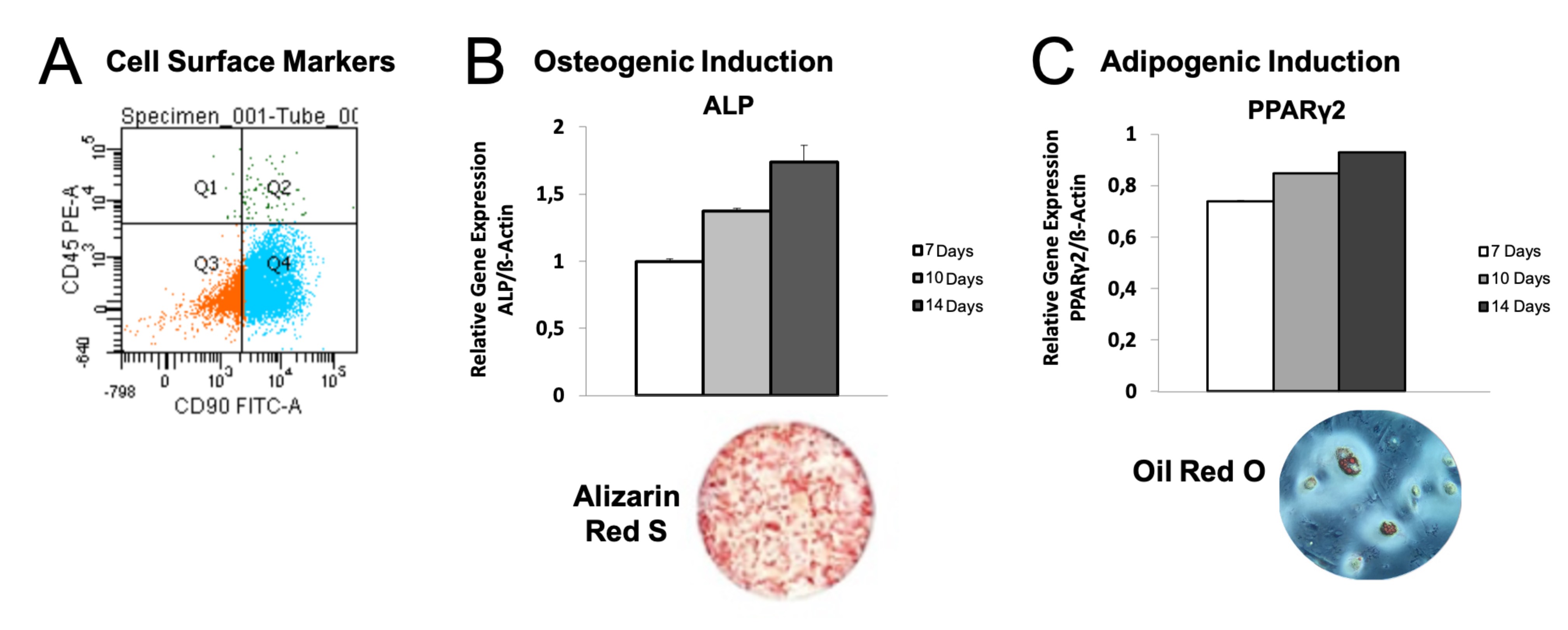Mesenchymal stem cells surpass the capacity of bone marrow aspirate concentrate for periodontal regeneration
DOI:
https://doi.org/10.1590/1678-7757-2021-0359%20Keywords:
Root cementum, Periodontal regeneration, Tissue engineering, Stem cellsAbstract
Regenerative approaches using mesenchymal stem cells (MSCs) have been evaluated to promote the complete formation of all missing periodontal tissues, e.g., new cementum, bone, and functional periodontal ligaments. MSCs derived from bone marrow have been applied to bone and periodontal defects in several forms, including bone marrow aspirate concentrate (BMAC) and cultured and isolated bone marrow mesenchymal stem cells (BM-MSCs). This study aimed to evaluate the periodontal regeneration capacity of BMAC and cultured BM-MSCs in the wound healing of fenestration defects in rats. Methodology: BM-MSCs were obtained after bone marrow aspiration of the isogenic iliac crests of rats, followed by cultivation and isolation. Autogenous BMAC was collected and centrifuged immediately before surgery. In 36 rats, fenestration defects were created and treated with suspended BM-MSCs, BMAC or left to spontaneously heal (control) (N=6). Their regenerative potential was assessed by microcomputed tomography (µCT) and histomorphometry, as well as their cell phenotype and functionality by the Luminex assay at 15 and 30 postoperative days. Results: BMAC achieved higher bone volume in 30 days than spontaneous healing (p<0.0001) by enhancing osteoblastic lineage commitment maturation, with higher levels of osteopontin (p=0.0013). Defects filled with cultured BM-MSCs achieved higher mature bone formation in early stages than spontaneous healing and BMAC (p=0.0241 and p=0.0143, respectively). Moreover, significantly more cementum-like tissue formation (p<0.0001) was observed with new insertion of fibers in specimens treated with BM-MSCs within 30 days. Conclusion: Both forms of cell transport, BMAC and BM-MSCs, promoted bone formation. However, early bone formation and maturation were achieved when cultured BM-MSCs were used. Likewise, only cultured BM-MSCs were capable of achieving complete periodontal regeneration with inserted fibers in the new cementum-like tissue.
Downloads

Downloads
Published
Issue
Section
License
Copyright (c) 2022 Journal of Applied Oral Science

This work is licensed under a Creative Commons Attribution 4.0 International License.
Todo o conteúdo do periódico, exceto onde está identificado, está licenciado sob uma Licença Creative Commons do tipo atribuição CC-BY.

